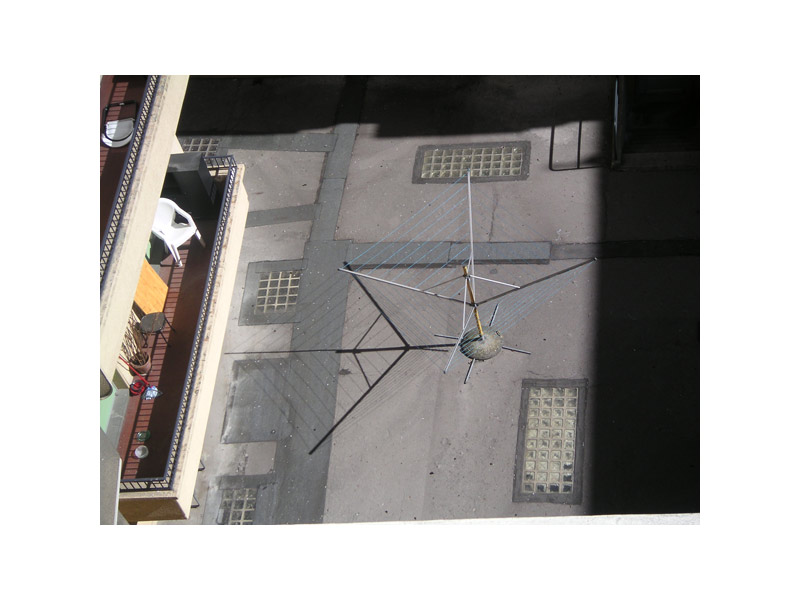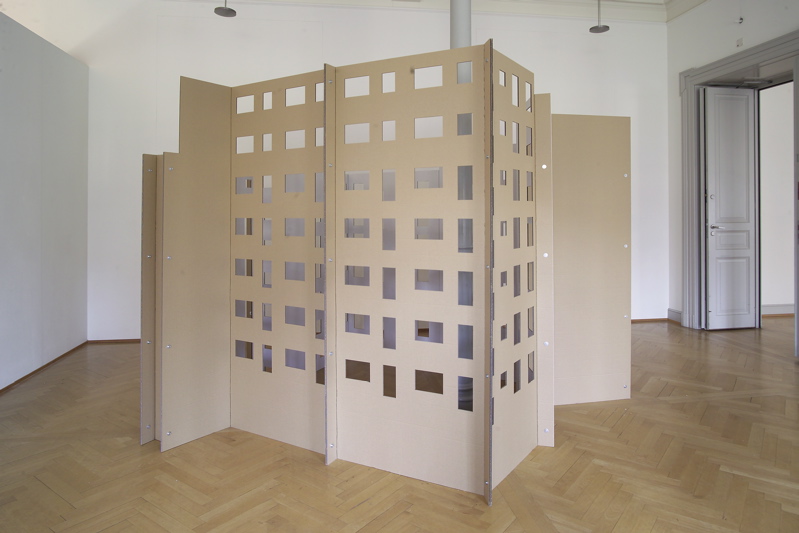

Let’s Tell Cities
by Christian Mayer
A city cannot be grasped, for it refuses all attempts at summation. It can only be approached by way of the countless stories about it and images of it. It can be invented anew in an imaginary space, thus becoming much more like the city we want to speak of than all the pseudo-objective attempts at fixation ever could. The stories and images exist, they circulate everywhere, but rarely does anyone attempt to link them to one another, allowing them to form new and surprising connections. They usually remain hidden in private, get lost in inanities. The desires lurking behind this that constitute the city thus remain invisible, making utopian conceptions of it impossible. But if we would just listen carefully, the city would tell us about itself.
"Stop looking at me that way! Just listen to me!"
The imaginary space in which we could approach the city manifests itself in various forms, and only becomes graspable in its concretizations. But this imaginary space itself escapes identification over and over, in so doing resembling the city. If we understand imagination as the internalization of an image, then this is also a performative process: an image penetrates me, becomes part of my visual world where I compare it to and associate it with already internalized images. This can trigger memories, produce feelings, simulate sensual impressions, thus setting off a performative process that necessarily remains incomplete, a process that can attain various intensities. Some images remain with me a lifetime, some can suddenly come to mind years later, while some are lost within minutes. This performative process between the image and myself contains the transformation of an external image to an internal one, where the external image always goes back to an inner image. The outer world becomes the inner world; the inner world becomes the outer world.
"Here inside it's always the same program. I’d prefer none at all, lights out, draw the curtain, get out!"
The courtyard is a concrete urban space that, like the space of the imagination, is difficult to categorize as either inside or outside. It can be looked into, hence it is inside. But, in contrast to the apartment from which I look onto it, it is a semi-public space without a roof—that is, outside. When a courtyard becomes an image, as in the cardboard sculpture "Innenhof " [Courtyard], then one can no longer be sure whether one is standing inside or outside. "Innenhof " looks like a sculpture turned inside out, allowing views in and views through, but never really letting us in. Through the openings that represent the windows of the apartments lining the courtyard, we look into the inside of the courtyard, of which we always only see a part, for the windows, tiny in comparison to us, limit our view. The space marked by the sculpture as courtyard is thus at the same time cordoned off by it, leaving us outside. This sculpture does not need us. In an atmosphere of imperviousness it rests in itself, and mutely turns its back to us. As the loose bearer of countless stories of its imaginary residents, it makes their desires palpable without clearly naming them. That the artist himself lived in one of these apartments and allowed his own desire to be inscribed in this work cannot be read off this sculpture. But this aspect becomes significant when we consider the work "Stewi im Innenhof" [Stewi in the Courtyard], directly linked to "Innenhof ".
"I want to get out of here, break out of these four walls, step out of my shadow, get out of here!"
"Stewi im Innenhof " works as if part of "Innenhof " had escaped. Divorced from the uncertain atmosphere of the sculpture, this detail takes on a form of concretization, or better put, a personality. Formally speaking, this would hardly be expected. As a color photograph framed in a massive wooden frame with matting, it seems very traditional. Visible in the image is part of the courtyard in Lausanne that was the model for the sculpture. The photograph thus makes something visible that in the abstract sculpture disappears in the brown of the cardboard: part of a balcony with plastic chairs and plants, and beneath it the concrete floor of the courtyard with a drying rack. But then the image does something unusual for a photograph: it speaks. Or more precisely: the drying rack visible in the image speaks. In this way, something strange happens. For in the image the presence and absence of the drying rack are indissolubly intertwined. As it is present in the medium of photography, its image points to its absent body and redeems it from its fleetingness. That makes "Stewi im Innenhof " something reminiscent of a spirit: an absent body that speaks eternally.
"Standing there, all limbs outstretched, offering your laundry, now again white, to the sun. Now we can show our face again, right?“
“Stewi” speaks to us as if we were residents of the surrounding apartments. It accuses us of not paying enough attention, of having a boring life. And it conjures up a utopian notion in which it overcomes its existence as a drying rack, floating through space like a satellite and expanding to ten dimensions. Through its articulation, this thing has already risen above the mass of things and established itself as a personality, but now it wants to leave this status behind too, to achieve an abstract state of permanent freedom. This is a dropout fantasy, the dream of abandoning the urban narrowness and limitations under which it suffers. Only by radically transforming its position in society does the drying rack see the possibility of reestablishing a personal balance and inner satisfaction. On listening, one assumes that this utopian state will not really exist for the drying rack. The tenth dimension is still inconceivable, Arachne's threads are still too thin. But the monologue shows us that it is precisely the imaginative space that can express our desire and promise intellectual development. And this power should not be underestimated. It can be a great deal more than mere vain fantasy. It can fill the city with the stories that will constitute it in the future.
"Capture all dreams and weave them together, weave worlds together, a landscape, weaving a story. All directions expand, upward, below, to the side, right and left, inside and out, into the future as well as the past."
(All quotes from: "Stewi im Innenhof ")
Stewi im Innenhof, framed photograph with audio system, voice: Roland Seidel, 2007
